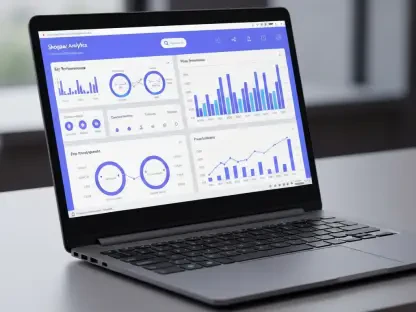In the fast-paced world of customer experience (CX), every interaction holds the potential to build trust or erode confidence, and while many calls proceed smoothly with meticulous planning and research, there are moments when things go awry, leaving professionals wishing for a way to turn back time. Picture a scenario where a critical call spirals out of control due to a lack of preparation or a misstep in communication—suddenly, the customer’s frustration mounts, and the conversation veers off track. These situations highlight the importance of proactive strategies to prevent errors before they occur. Mistakes in customer interactions can be costly, impacting not just the immediate relationship but also long-term loyalty. Fortunately, with the right approach, such missteps can be minimized. This article explores practical, actionable steps to ensure calls run effectively, reducing the likelihood of needing to correct errors or salvage a damaged impression. By focusing on preparation and structure, CX professionals can navigate even the most challenging conversations with confidence.
1. Get Ready in Advance
Being unprepared for a customer call can lead to significant setbacks, from damaging first impressions to wasting valuable time and diminishing trust. Preparation is the foundation of a successful interaction, and skipping this step often results in avoidable errors. Before joining any call, time must be dedicated to gathering essential information about the customer and their issue. This involves using CRM tools to review the customer’s history, examining details of the specific case or ticket, and conducting keyword searches within internal documentation to identify potential solutions. Adhering to team best practices also ensures a consistent approach. Without this groundwork, professionals risk stumbling through conversations, unable to address concerns effectively. A little effort upfront can prevent the need for damage control later, ensuring the call starts on the right foot and progresses smoothly toward resolution.
Preparation extends beyond just reviewing data; it includes anticipating potential challenges and questions that might arise during the discussion. Consider the customer’s perspective—what might they prioritize or worry about? A thorough understanding of the issue, combined with insights into the customer’s background, allows for tailored responses that demonstrate competence and care. Additionally, ensuring access to all necessary resources, such as troubleshooting guides or escalation protocols, can make a significant difference. This level of readiness not only boosts confidence but also helps maintain a professional demeanor, even under pressure. When unexpected situations emerge, a solid foundation of preparation enables quick adaptation without losing focus. Ultimately, this proactive mindset transforms potential pitfalls into opportunities to impress, reducing the chances of wishing for a second chance after the call ends.
2. Ensure the Customer is Set for the Call
Equally important as internal preparation is confirming that the customer is ready for the interaction, as their lack of readiness can derail even the most well-planned conversation. Before the call begins, customers should be informed of any prerequisites, such as the need to share their screen, use specific meeting tools, or have certain data on hand. Additionally, they must be aware if specific permissions for operating systems, applications, databases, or hypervisors are required, or if particular team members should be present. This step ensures that both sides can make the most of the time spent together, avoiding delays caused by technical or logistical oversights. Clear communication about expectations sets the stage for a productive dialogue and prevents frustration from unnecessary hiccups.
Beyond technical requirements, ensuring the customer’s readiness involves clarifying the purpose and scope of the call to align expectations. A simple pre-call message or reminder can outline what will be discussed and what they might need to contribute. This transparency helps customers feel included and valued, fostering a collaborative atmosphere. It also minimizes the risk of misunderstandings that could lead to wasted effort or unresolved issues. When customers are prepared, the conversation flows more efficiently, allowing for focused problem-solving rather than addressing preventable barriers. By taking this extra step, CX professionals can create a seamless experience that benefits everyone involved, significantly lowering the odds of needing to revisit or redo parts of the interaction due to initial missteps.
3. Be Mindful with Your Communication
Communication during customer calls must be deliberate, as careless or off-the-cuff remarks can quickly introduce doubt or escalate concerns, undermining the entire interaction. Examples of problematic language include speculating about product flaws without concrete evidence, disclosing internal details that should remain confidential, or making promises that cannot be kept. Such missteps can make customers question the resolution process or lose confidence in the support provided. To avoid these pitfalls, thorough research and preparation are essential, as is staying focused and intentional with every word. Embracing brief silences rather than filling them with unnecessary chatter is also key, as is admitting when an answer is unknown with a commitment to follow up. This approach maintains credibility and keeps the conversation on track.
Mindful communication also means tailoring responses to the customer’s tone and needs while avoiding emotional reactions, even in tense situations. Staying calm and professional prevents the risk of saying something regrettable under pressure. It’s vital to listen actively, ensuring that the customer feels heard, and to respond with clarity and purpose. Avoiding jargon or overly technical explanations, unless requested, can further prevent confusion. By maintaining this level of discipline, the risk of miscommunication diminishes, and trust is preserved. Each interaction becomes an opportunity to reinforce reliability rather than a moment where a misspoken word could lead to the need for damage control. This careful approach to dialogue ensures that conversations remain constructive, paving the way for effective resolutions without lingering doubts.
4. Establish a Clear Plan for the Call
Even in urgent or high-stakes situations, diving into a customer call without structure can create chaos, making it difficult to address issues systematically or close the conversation effectively. Starting with a clear agenda provides a roadmap for the discussion, keeping everyone aligned. This should include defining the problem to confirm the issue at hand, introducing participants from both sides to adjust approaches if needed, checking for additional concerns beyond the main topic, outlining the strategy with specific actions to be taken, verifying agreement on the plan, and ensuring a proper wrap-up. A structured start prevents the conversation from jumping haphazardly between topics, which can confuse participants and hinder progress. This framework keeps the call focused and purposeful from beginning to end.
Implementing an agenda also demonstrates professionalism and respect for the customer’s time, signaling that their issue is being taken seriously. It allows for flexibility to address unexpected concerns while maintaining control over the flow of the discussion. For instance, confirming additional issues early in the call ensures that all relevant topics are covered without derailing the primary objective. Referring to pre-shared information, such as case notes, during the strategy outline reinforces preparedness and builds trust. This structured approach minimizes the risk of overlooking critical points or leaving participants unclear about next steps. By adhering to a well-defined plan, the likelihood of needing to revisit the conversation due to missed details or misaligned expectations is significantly reduced, ensuring a more efficient and satisfactory outcome for all parties.
5. Document Key Points During the Call
Taking detailed notes during a customer call is a critical practice, especially in high-pressure or complex scenarios where multiple details and action items emerge. Capturing main discussion points, open questions, new insights, additional issues, customer requests, and specific tasks for both sides ensures that nothing important is forgotten. This habit is particularly valuable in emergency situations with anxious participants or numerous moving parts. Well-documented notes serve as a reliable reference after the call, helping to track progress and maintain continuity if follow-up is required. Without this record, critical information can slip through the cracks, leading to misunderstandings or delays in resolution. Proper documentation acts as a safeguard against oversight, preserving the integrity of the interaction.
Beyond preventing forgetfulness, note-taking facilitates clear communication with internal teams and customers alike, ensuring everyone stays on the same page. Summarizing key takeaways during the call can also confirm mutual understanding before concluding. Notes provide a foundation for updating case records or ticketing systems, which is essential for transparency and accountability. They also help identify patterns or recurring issues that might require broader solutions. By maintaining this disciplined approach, CX professionals can avoid the frustration of revisiting topics due to missing details or unclear agreements. This practice transforms potentially chaotic interactions into organized exchanges, reducing the chances of needing to backtrack or correct errors after the fact. Accurate documentation ultimately supports a seamless experience, reinforcing trust and efficiency in every customer engagement.
6. Follow Through with a Strong Conclusion
While preparation, mindful communication, and a clear agenda lay the groundwork for a successful call, a strong conclusion is equally vital to ensure the interaction feels complete and productive. Closing effectively involves restating the call’s original purpose, summarizing actions taken (ideally linking back to the agenda), highlighting the value delivered—whether through resolution or other progress like improved clarity or troubleshooting data—and asking for final input on questions or concerns. Additionally, outlining next steps, explaining how they will be communicated, directing customers to resources like case numbers or emails, confirming access to ticketing systems, and providing timelines for follow-ups or case closure are essential. A well-executed conclusion prevents the lingering sense of failure or unresolved issues, solidifying the call’s purpose and outcomes.
The closing phase also offers a chance to reinforce the customer’s confidence by emphasizing how their needs have been or will be addressed, even if the call didn’t fully resolve the issue. Acknowledging progress, such as increased understanding or potential product improvements, shows that their time was valued. Clear communication about follow-up actions and accessible resources ensures transparency, reducing uncertainty about what happens next. This final touch can turn a challenging interaction into a positive experience by demonstrating commitment to resolution. By focusing on these closing steps, the risk of leaving customers frustrated or confused is minimized, as is the need to revisit the conversation due to unclear outcomes. A thoughtful conclusion leaves a lasting impression of professionalism, ensuring that each call ends on a constructive note.
7. Reflecting on Past Challenges
Looking back, countless customer interactions have left professionals wishing they could rewind and correct missteps that led to frustration or dissatisfaction. There have been moments when inadequate preparation resulted in stumbling responses, or when a lack of structure caused conversations to veer off course, leaving issues unresolved. Instances of careless words sparking doubt or failing to close a call properly have often created lingering uncertainty for customers. These past challenges served as critical lessons, highlighting the importance of proactive measures in every interaction. Each difficult call underscored the value of readiness, clear communication, and structured approaches in preventing errors. Reflecting on these experiences revealed gaps that needed addressing, paving the way for improved practices that transformed potential failures into opportunities for growth.
These historical struggles also emphasized the need for continuous improvement in handling customer calls, as each misstep carried consequences for trust and efficiency. Situations where customers were unprepared or where key details were overlooked in notes often led to unnecessary follow-ups, wasting time for all involved. Recognizing these patterns prompted a shift toward more disciplined habits, ensuring that every interaction was approached with care. Past errors became a reminder that small oversights could have significant impacts, reinforcing the importance of diligence at every stage. By learning from those moments of wishing for a do-over, strategies were refined to prioritize preparation and clarity. This reflection on earlier challenges ultimately shaped a more reliable framework for CX, reducing the frequency of regrettable outcomes and fostering stronger customer relationships over time.









